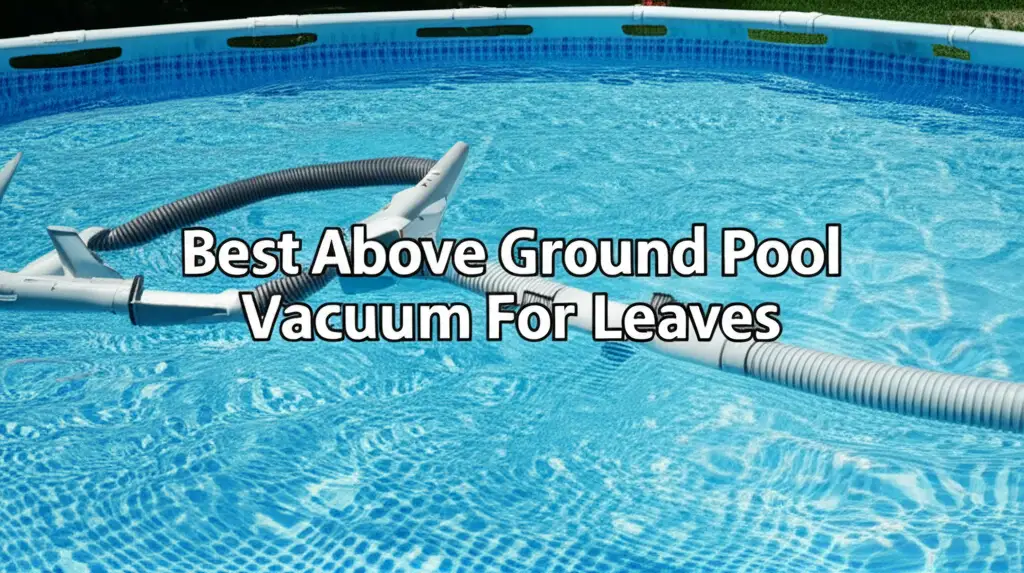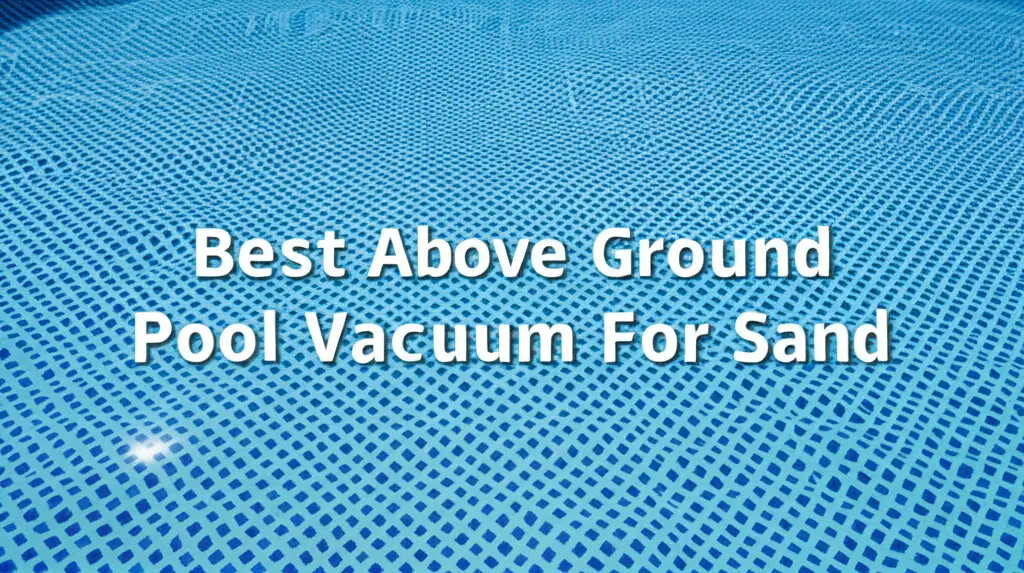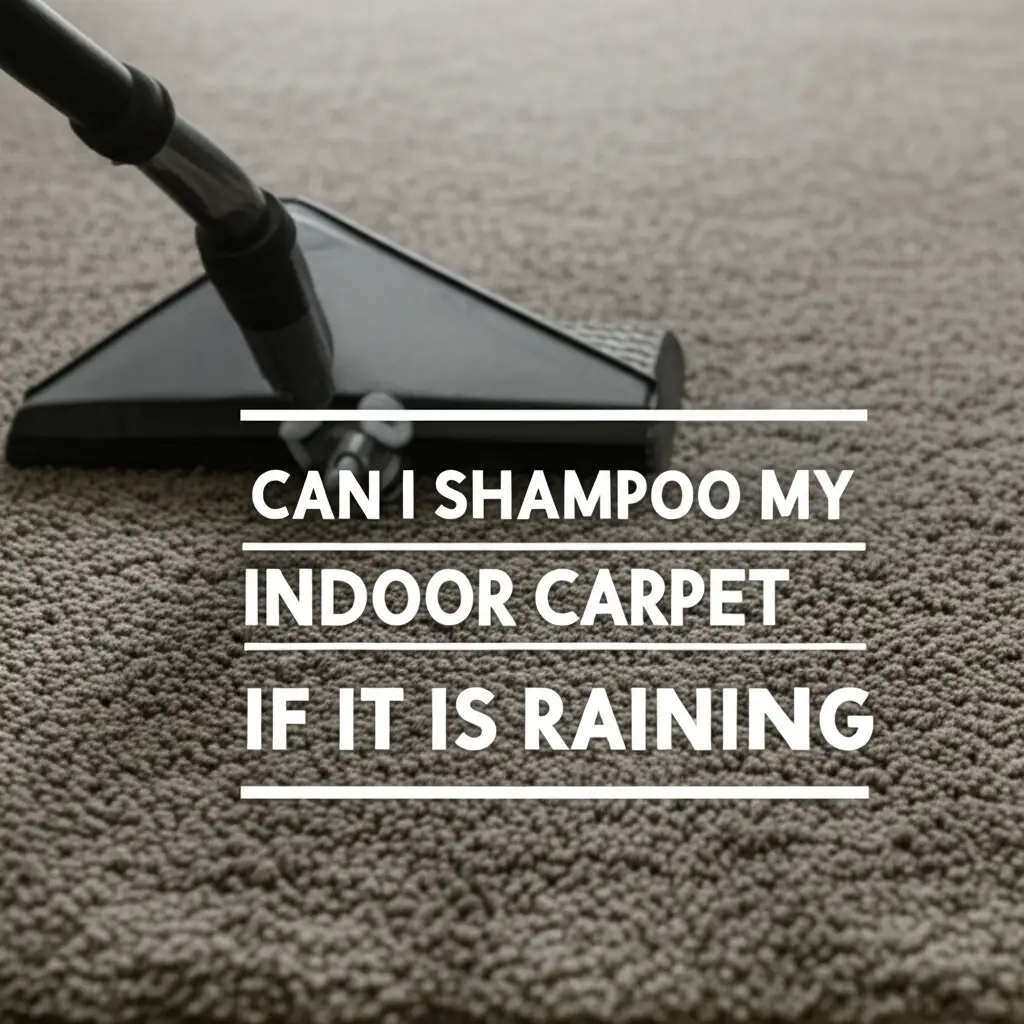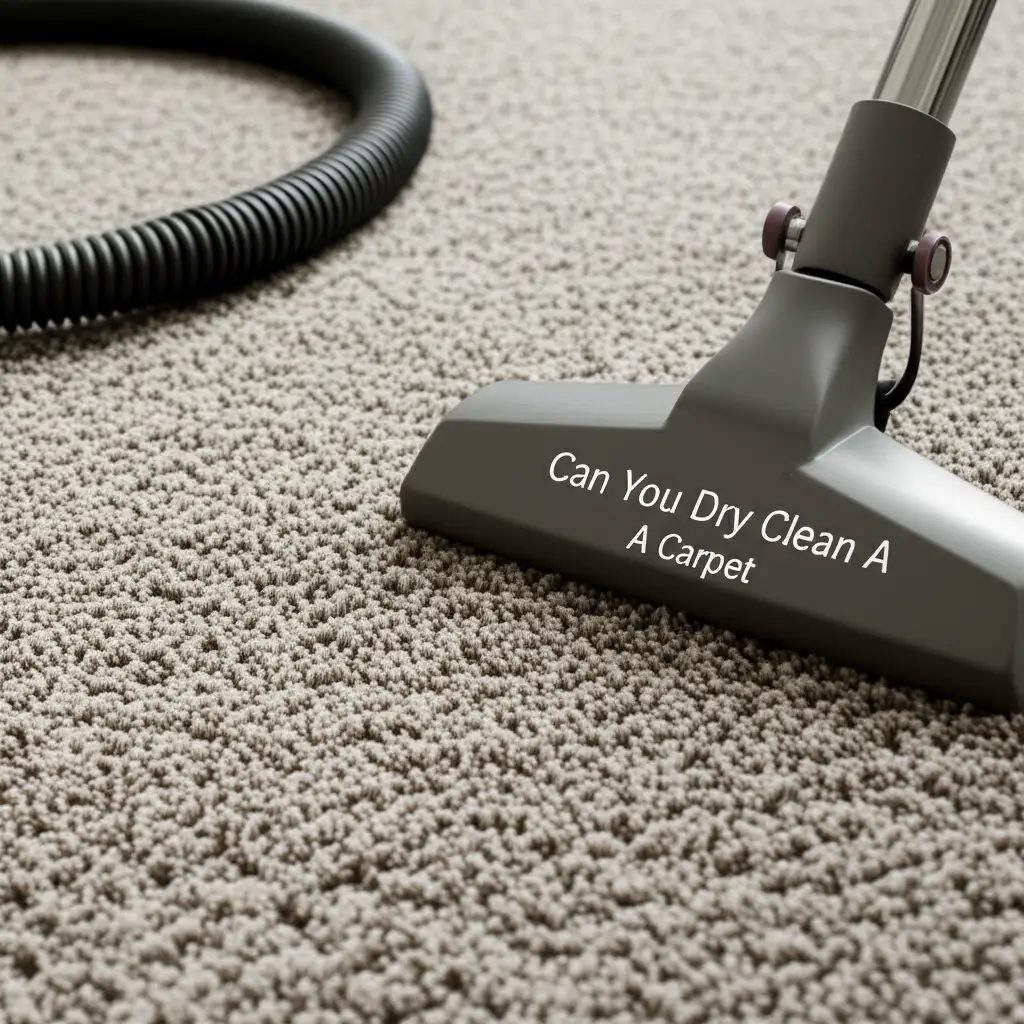· Mason Everett · Pool Maintenance · 20 min read
Best Above Ground Pool Vacuum For Fine Dirt
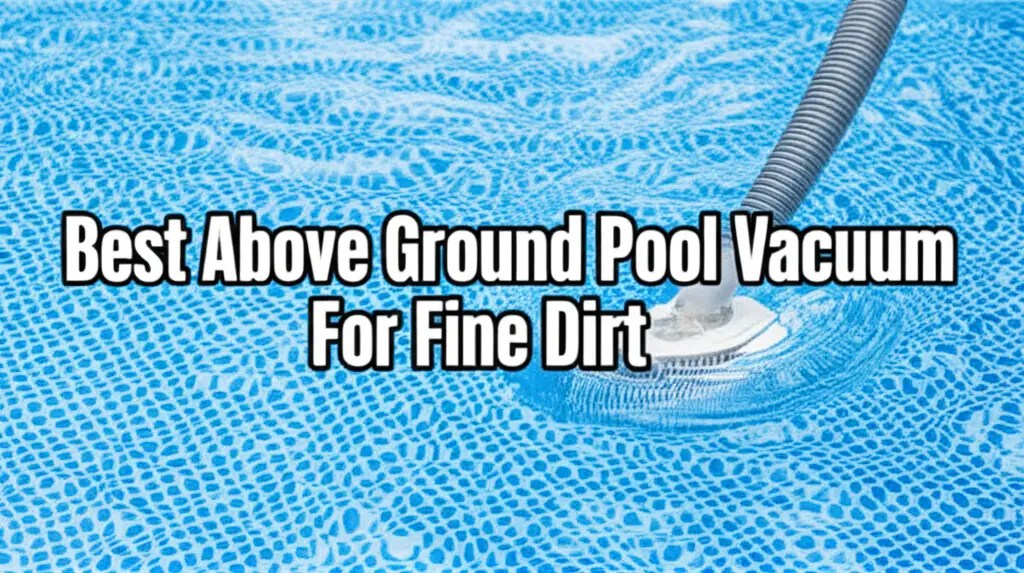
Best Above Ground Pool Vacuum For Fine Dirt
You want a sparkling clean pool, but fine dirt, silt, and sand can make that a real challenge. These tiny particles settle on the bottom, cloud your water, and often escape standard pool filters. Finding the best above ground pool vacuum for fine dirt is a game-changer. I know the frustration of seeing cloudy water even after vacuuming. This guide will help you pick the right tool. We will cover different vacuum types, essential features, and smart cleaning techniques. You can make your pool clear and inviting again.
Takeaway
- Choose the Right Vacuum: Robotic or manual vacuums with fine filtration are best for silt.
- Prioritize Filtration: Look for vacuums with micron ratings of 50 microns or less.
- Master Vacuuming Technique: Go slow, overlap strokes, and vacuum to waste if possible.
- Maintain Your Filter: A clean pool filter is crucial for catching fine particles.
- Address Water Chemistry: Use clarifiers or flocculants for stubborn cloudiness.
The best above ground pool vacuum for fine dirt is often a robotic cleaner with fine filtration or a powerful suction-side cleaner used with a “vacuum to waste” setting. These tools effectively capture tiny particles that regular pool vacuums might miss or recirculate, giving you clear pool water.
Understanding Fine Dirt in Your Above Ground Pool
Fine dirt, silt, and sand are common problems for above ground pool owners. These tiny particles easily bypass many standard pool filters. They make your pool water look cloudy or murky. I have spent hours trying to clear my pool, only to find the fine dirt settling back down.
What Makes Fine Dirt So Challenging?
Fine dirt is different from larger debris like leaves or bugs. Its small size allows it to pass through filter media. Sand filters, cartridge filters, and DE filters all have limitations. A filter designed for leaves might not catch fine silt. The particles are so light that they stir up easily. This makes vacuuming difficult without clouding the water further.
These tiny particles also build up quickly. Rain can wash soil into the pool. Wind blows dust and pollen across the water. Swimmers track in dirt from their feet. Your pool’s ecosystem constantly fights these contaminants. Choosing the right vacuum helps manage this ongoing challenge effectively.
Common Sources of Fine Sediment in Pools
Fine dirt often enters your pool from several sources. Understanding these sources helps you prevent some of the dirt from entering. It also guides your cleaning efforts.
- Environmental Factors: Rain can wash dirt and silt from your yard into the pool. Wind carries dust, pollen, and even fine sand. Trees and plants near the pool release pollen and tiny organic matter.
- Swimmers: People bring in dirt on their feet and swimsuits. Even a quick rinse before entering helps, but some particles always get in. Sunscreen and lotions also break down into fine particles over time.
- Construction or Landscaping: Nearby construction creates a lot of dust. This dust can easily settle in your pool. New landscaping or disturbed ground around the pool can also contribute.
- Old Plaster or Liners: Over time, pool surfaces can break down. This creates fine dust that becomes suspended in the water. Liners might degrade, releasing tiny plastic particles.
Dealing with fine dirt means you need a vacuum that captures these minute particles. Your current filter might not be enough. The right vacuum makes a huge difference.
Types of Above Ground Pool Vacuums for Fine Dirt
Choosing the right type of vacuum is crucial when dealing with fine dirt. Not all pool vacuums handle silt and sand effectively. I have tried several kinds over the years. Some work well for large debris, but they just stir up fine particles. Other vacuums are specifically designed for the tough job of fine dirt removal.
Robotic Pool Vacuums: The Automated Solution
Robotic pool vacuums are independent cleaning machines. They run on electricity and have their own internal filter systems. Many models come with ultra-fine filter bags or cartridges. These filters can capture particles down to 2 microns. This is much finer than most pool filter systems.
Robots move around the pool floor and walls using smart navigation. You simply drop them in the water and turn them on. They scrub and vacuum simultaneously. Robotic cleaners are often the best choice for fine dirt. They do not rely on your pool pump. This means they do not put extra strain on your pool’s filter. They are an investment, but they save time and effort.
Suction-Side Pool Vacuums: Utilizing Your Pool Pump
Suction-side pool vacuums connect to your pool’s skimmer or a dedicated vacuum line. They use your pool pump’s suction to pull water and debris into the vacuum head. The dirt then travels through your pool’s plumbing and into your main filter. For fine dirt, this means your pool filter must be in top condition.
These vacuums are generally less expensive than robotic cleaners. They are good for continuous daily cleaning. However, if your pool filter cannot handle fine particles, this type of vacuum will recirculate them. You may need a specialty filter bag for the vacuum head. This bag can catch fine dirt before it reaches your main filter. This helps protect your pool filter system.
Pressure-Side Pool Vacuums: Power from Your Return Line
Pressure-side pool vacuums connect to your pool’s return line. They use the pressure from your pool pump to power them. These vacuums usually have their own filter bag. This bag collects debris before the water returns to the pool. This is a big advantage for fine dirt. The fine dirt does not go through your main pool filter.
These vacuums are typically more powerful than suction-side cleaners. They are good for picking up larger debris and some fine particles. However, their internal filter bags might not be as fine as those in robotic cleaners. They also require your pool pump to be running. This adds to your energy costs. Check the micron rating of the pressure cleaner’s filter bag for fine dirt effectiveness.
Manual Pool Vacuums: The Hands-On Approach
Manual pool vacuums are simple tools. They consist of a vacuum head, a telescopic pole, and a vacuum hose. The hose connects to your skimmer or vacuum port. You push and pull the vacuum head across the pool floor by hand. This gives you complete control over the cleaning process.
Manual vacuums are the most affordable option. They are very effective for fine dirt if you use the right technique. You can move slowly and avoid stirring up particles. You can also vacuum directly to waste. This bypasses your filter entirely. Vacuuming to waste means you lose some pool water, but it ensures fine dirt is removed. This method is often the best for clearing very cloudy water caused by fine silt.
Key Features to Look for in a Fine Dirt Pool Vacuum
When you choose an above ground pool vacuum, certain features make a big difference. These features help the vacuum handle fine dirt and silt effectively. I always check for these specific attributes. They ensure the vacuum does not just stir up the problem.
Superior Filtration Capabilities
This is the most critical feature for fine dirt. A good vacuum needs excellent filtration. Look for vacuums with filter bags or cartridges that capture small particles. Robotic vacuums often specify micron ratings. A lower micron rating means finer filtration. For fine dirt, aim for 50 microns or less. Some high-end robotic cleaners can filter down to 2 microns. This is excellent for silt and dust.
Suction-side or pressure-side vacuums might offer fine mesh bags. These bags trap smaller particles before they reach your main filter. If you plan to vacuum to waste, filtration within the vacuum is less important. However, strong filtration prevents you from constantly backwashing your main filter. It also keeps your water clear.
Strong Suction Power
Effective removal of fine dirt requires good suction. The vacuum needs to pull in the tiny particles without losing them. A weak vacuum will just push the dirt around. Robotic cleaners have powerful internal motors. Suction-side vacuums depend on your pool pump’s strength. Ensure your pump is strong enough for the vacuum you choose.
Pressure-side vacuums also rely on pump pressure. Check the recommended pump size for any vacuum model. Good suction ensures the vacuum picks up settled dirt efficiently. It minimizes the amount of fine particles left behind.
Brush and Wheel Design for Agitation and Movement
The design of the vacuum head matters. Brushes on the bottom of the vacuum head help dislodge fine dirt from the pool surface. This makes it easier for the vacuum to pick them up. Wheels or tracks should be smooth. They must allow the vacuum to move without stirring up the settled dirt. Rough wheels can kick up clouds of silt.
Look for a vacuum with good maneuverability. This is especially true for manual vacuums. Weighted heads help keep the vacuum on the bottom. This prevents it from floating up when you pull it. A well-designed head ensures maximum contact with the pool floor.
Ease of Use and Maintenance
A vacuum can have great features, but if it is hard to use, you will not use it often. Consider how easy it is to set up and operate. Robotic cleaners are often plug-and-play. Manual vacuums require assembling a pole and hose. Cleaning the vacuum itself is also important.
Filter bags or cartridges should be easy to remove and rinse. Some robotic vacuums have top-loading filters for quick access. This makes regular cleaning simple. Keeping your vacuum clean ensures it performs well. Just like any tool, proper vacuum cleaner maintenance helps it last longer. It also prevents dirt from being redeposited into the pool.
Top Recommendations: Best Above Ground Pool Vacuums for Fine Dirt
Choosing the right above ground pool vacuum for fine dirt can feel overwhelming. Many options exist. My personal experience points to certain types and features that work best. I focus on vacuums known for capturing tiny particles.
High-Performance Robotic Cleaners
Robotic cleaners often stand out for fine dirt. They have independent filtration systems. This is a huge benefit. They collect dirt without sending it to your main filter. This reduces strain on your filter. Many models offer fine particle filtration.
- Dolphin Nautilus CC Plus: This is a popular choice. It has dual scrubbing brushes. It handles pool floors and walls well. Its filter system is designed for fine debris. It is easy to empty and clean. The smart navigation ensures full coverage.
- Robo-Kleen Series: Some models from Robo-Kleen also excel. They offer strong suction and excellent fine particle filtration. They are built for reliability. They are great for pools with constant fine sediment issues.
- Polaris ATLAS XT: This robotic cleaner offers powerful cleaning. It has strong suction and good filtration. It navigates well around above ground pools. Its large debris canister also helps with general cleaning.
These robotic cleaners are an investment. However, they save you a lot of time and effort. They keep your pool consistently cleaner. They are often the most effective solution for ongoing fine dirt problems.
Effective Suction Cleaners for Silt
Suction-side cleaners can work for fine dirt if chosen carefully. They must be paired with a good pool filter. They also benefit from specific design features.
- Baracuda G3/G4: These models are known for their quiet operation and powerful suction. They can pick up fine debris. Make sure your pool pump is strong enough. Consider adding a pre-filter or leaf canister to protect your main filter.
- Kreepy Krauly Lil Shark: This vacuum is designed for above ground pools. It has a unique design that helps it pick up both large and small debris. Its simple operation makes it easy to use. Remember, the effectiveness depends on your pool’s main filter. You might also consider using a fine mesh skimmer sock to help capture more particles before they hit your filter.
When using a suction cleaner for fine dirt, remember to clean your pool filter often. Cleaning your pool cartridge filter is essential for efficient debris removal.
Reliable Manual Vacuum Systems
Manual vacuuming is labor-intensive, but it offers precise control. It is often the best method for very cloudy pools with settled fine dirt.
- Weighted Vacuum Head: Choose a vacuum head with good weight. This keeps it on the pool bottom. It prevents it from floating up and stirring dirt. Heads with brushes help dislodge stuck-on silt.
- Fine Mesh Skimmer/Vacuum Bag: Some manual vacuum heads allow you to attach a fine mesh bag directly. This collects debris before it reaches your pump. It protects your filter.
- Vacuum Hose: Use a good quality, non-kink hose. A consistent flow is vital for suction.
The key to manual vacuuming fine dirt is technique. You must move slowly. This prevents stirring up the silt. You should also vacuum to waste if your plumbing allows. This sends the dirty water out of the pool directly. It bypasses your filter system completely. This method removes the most fine dirt quickly. It avoids recirculating particles back into the pool.
Vacuuming Techniques for Removing Fine Silt and Sand
Vacuuming fine silt and sand is different from vacuuming leaves. These tiny particles get agitated very easily. If you vacuum too fast, you will just stir them up. The water will become cloudy again. I learned this the hard way. Here are the techniques that work best.
Preparing Your Pool for Vacuuming
Before you start, prepare your pool. This maximizes the vacuum’s effectiveness. It prevents you from wasting time.
- Turn off the Pool Pump: Stop water circulation. This allows fine dirt to settle completely. Give it several hours, or even overnight. Patience is key here.
- Adjust Valves: If you plan to vacuum to waste, adjust your multiport valve. Set it to the “Waste” or “Drain” position. This bypasses your main filter. It sends dirty water directly out of your pool. If you do not have a waste setting, prepare to backwash frequently.
- Assemble Your Vacuum: Connect your manual vacuum head, pole, and hose. Ensure all connections are tight. No air leaks should be present. Purge air from the hose by slowly feeding it into the skimmer or vacuum port. This fills it with water.
Proper preparation saves you from frustration. It ensures the fine dirt stays settled until you remove it.
Slow and Steady Wins the Race
This is the golden rule for fine dirt. Move your vacuum head very slowly. Imagine you are gliding it over glass. Fast movements create currents. These currents stir up the fine dirt. Then the dirt becomes suspended in the water again. Your pool will look cloudy.
Overlap each vacuum stroke slightly. This ensures you do not miss any spots. Do not lift the vacuum head from the floor during a pass. Keep continuous contact. If you need to reposition, lift the head very slowly. Allow the water to settle again if you see a cloud of dirt. This methodical approach takes time. It gives the best results for fine silt.
Vacuuming to Waste: A Critical Strategy
Vacuuming to waste is the best method for heavy fine dirt. It bypasses your pool filter entirely. This prevents the fine particles from clogging your filter. It also stops them from being recirculated into your pool.
To vacuum to waste, set your multiport valve to “Waste” or “Drain.” Connect your vacuum hose. As you vacuum, dirty water leaves the pool through the waste line. Keep an eye on your pool’s water level. You will lose water during this process. Have your garden hose ready to refill the pool as needed. This ensures your pump does not run dry. Vacuuming to waste is especially useful when dealing with a lot of sand or heavy silt. It is a very efficient way to remove a large volume of fine debris.
Post-Vacuuming Pool Care
After vacuuming, you have a few steps to complete. These steps help maintain water clarity. They also protect your equipment.
- Backwash/Clean Filter: If you did not vacuum to waste, backwash your sand or DE filter. Clean your cartridge filter. Maintaining your pool filter is crucial after removing fine dirt. This prevents the dirt from going back into the pool.
- Balance Water Chemistry: Check your pool’s pH, alkalinity, and chlorine levels. Vacuuming can alter these levels. Adjust them as needed. Proper water balance helps keep your water clear.
- Add Fresh Water: If you vacuumed to waste, refill your pool to the correct level.
- Run Pump: Run your pool pump for several hours after cleaning. This circulates the water. It also helps any remaining fine particles get caught by your filter.
Regular and careful vacuuming, combined with these techniques, will keep your above ground pool water sparkling.
Maintaining Your Pool Filter System for Optimal Fine Dirt Removal
Your pool filter system is the unsung hero in the fight against fine dirt. Even the best above ground pool vacuum needs a good filter to work effectively. If your filter is clogged or ineffective, fine dirt will recirculate. It will keep your water cloudy. I have learned that proper filter maintenance is as important as the vacuum itself.
The Role of Your Pool Filter
Your pool filter is designed to remove contaminants from the water. It catches particles as water passes through it. For fine dirt, the filter’s micron rating is critical.
- Sand Filters: These use sand as a filter media. They typically filter down to 20-40 microns. They are good for general debris but can struggle with very fine silt.
- Cartridge Filters: These use a pleated fabric cartridge. They filter down to 10-25 microns. They offer better fine particle removal than sand.
- Diatomaceous Earth (DE) Filters: These use a fine powder that coats grids. They can filter down to 2-5 microns. DE filters are the best at removing the finest particles.
No matter the type, your filter becomes less effective as it collects dirt. The pressure gauge on your filter indicates its condition. A higher pressure means your filter is getting dirty. This means it is time to clean it.
Backwashing and Cleaning Your Filter
Regular cleaning of your filter is non-negotiable for fine dirt removal.
- Sand Filters: You backwash a sand filter. This involves reversing the water flow. It flushes trapped dirt out through the waste line. Backwash when the pressure gauge rises 5-10 PSI above its clean operating pressure. Backwashing frequently after vacuuming fine dirt is essential.
- Cartridge Filters: You clean cartridge filters by removing the cartridge. Then you rinse it thoroughly with a garden hose. You can use a special filter cleaning solution for stubborn dirt. Clean them when the pressure rises. A clean cartridge filter significantly improves water clarity. Cleaning your pool cartridge filter properly ensures maximum filtration.
- DE Filters: DE filters require backwashing. Then you recharge them with new DE powder. This process needs more attention. It provides the best fine particle filtration.
Neglecting filter cleaning means you are fighting a losing battle against fine dirt. A clean filter allows your vacuum to perform its best. It also helps your water stay clear naturally.
When to Use Flocculants or Clarifiers
Sometimes, despite your best efforts, fine dirt remains suspended. This makes your water cloudy. Flocculants and clarifiers can help in these situations.
- Pool Clarifiers: These products cause small particles to clump together. The clumps become large enough for your filter to catch. Clarifiers work well for mild cloudiness. They are safe for continuous use.
- Pool Flocculants: These are stronger products. They cause particles to combine into larger, heavier clumps. These clumps then sink to the pool bottom. Once settled, you can vacuum them to waste. Flocculants are used for very cloudy water. You must vacuum to waste after using a flocculant. Otherwise, the settled dirt will just go back into your filter and recirculate.
Always follow product instructions carefully. Using these chemicals incorrectly can make problems worse. They are aids, not replacements, for good vacuuming and filtration. They help bring those last stubborn fine particles out of suspension.
Troubleshooting Common Fine Dirt Vacuuming Problems
Even with the best equipment and techniques, you might run into problems. Fine dirt is notoriously stubborn. I have faced many issues during my pool cleaning journey. Understanding common problems and their solutions saves you time and frustration.
Cloudy Water After Vacuuming
This is a very common issue with fine dirt. You vacuum, and the water turns cloudy. This happens because the fine particles were stirred up. Your filter then cannot catch them.
- Solution 1: Vacuum Slower: The most likely cause is vacuuming too fast. Go even slower next time. Imagine moving the vacuum head at a snail’s pace.
- Solution 2: Vacuum to Waste: If you are not already, set your multiport valve to “Waste.” This sends the dirty water directly out of the pool. It bypasses your filter completely. This is the most effective way to prevent recirculation.
- Solution 3: Check Filter: Your main pool filter might be dirty or inadequate for fine particles. Clean your pool cartridge filter or backwash your sand/DE filter. Consider adding a filter aid, like a clarifier or flocculant, to help your filter catch smaller particles.
- Solution 4: Let it Settle: After vacuuming, turn off your pump. Let the water sit for several hours, or overnight. This allows the stirred-up particles to settle again. Then, you can try vacuuming very slowly once more.
Loss of Suction
A loss of suction means your vacuum is not picking up dirt effectively. This can happen during cleaning. It makes the job take longer and gives poor results.
- Solution 1: Check Hose and Connections: Look for kinks in the vacuum hose. Ensure all connections are tight. Air leaks reduce suction significantly.
- Solution 2: Empty Baskets: Your skimmer basket or pump basket might be full. Empty them. A full basket restricts water flow.
- Solution 3: Check Main Filter: Your pool filter might be clogged. Check the pressure gauge. If it is high, backwash or clean your filter. A dirty filter reduces pump efficiency and suction.
- Solution 4: Vacuum Head Clog: The vacuum head itself might be clogged with debris. Lift it out of the water and inspect the opening. Clear any blockages.
- Solution 5: Pump Issue: Ensure your pool pump is running correctly. Check for air in the pump basket or filter housing. Bleed any trapped air.
Dirt Blowing Back into the Pool
This problem is frustrating. You vacuum, and dirt seems to blow out of the returns or the vacuum itself. This means the dirt is not being captured.
- Solution 1: Check Vacuum Filter (if applicable): If you use a robotic or pressure-side cleaner with its own filter bag, check it. The bag might be full or too coarse for the fine dirt. Empty it and ensure it is the correct fine-micron bag.
- Solution 2: Main Filter Issues: If you are using a suction-side vacuum, your main pool filter is letting dirt through. This is common with fine dirt. Your filter media might be old. Sand filters need new sand every 5-7 years. Cartridges wear out.
- Solution 3: Vacuum to Waste: This is the most direct solution. If dirt is blowing back, you must bypass your filter. Vacuuming to waste ensures all collected dirt leaves the pool system. It’s similar to how some vacuum cleaners have different settings for low and high carpet. You need the “right setting” (vacuum to waste) for the “fine dirt carpet” (your pool).
- Solution 4: Use a Flocculant: If dirt is too fine for your filter, a flocculant can help. It makes particles clump together. They become heavy and sink. Then you can vacuum them to waste. This is an advanced technique.
Solving these common problems helps


